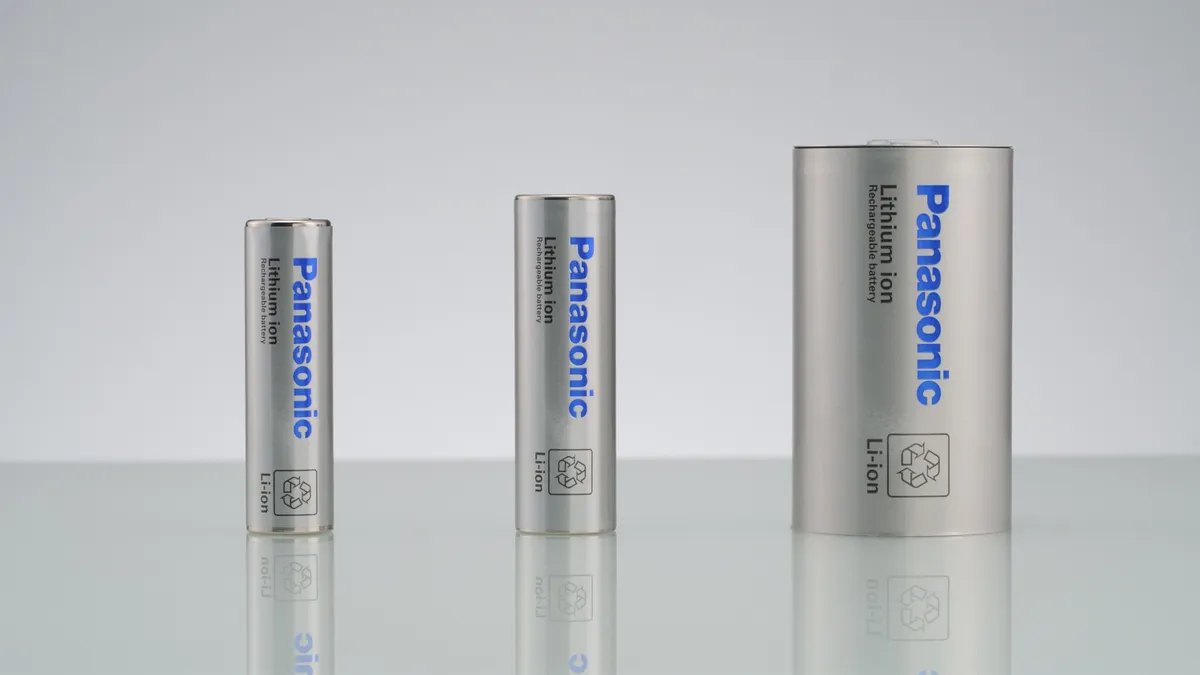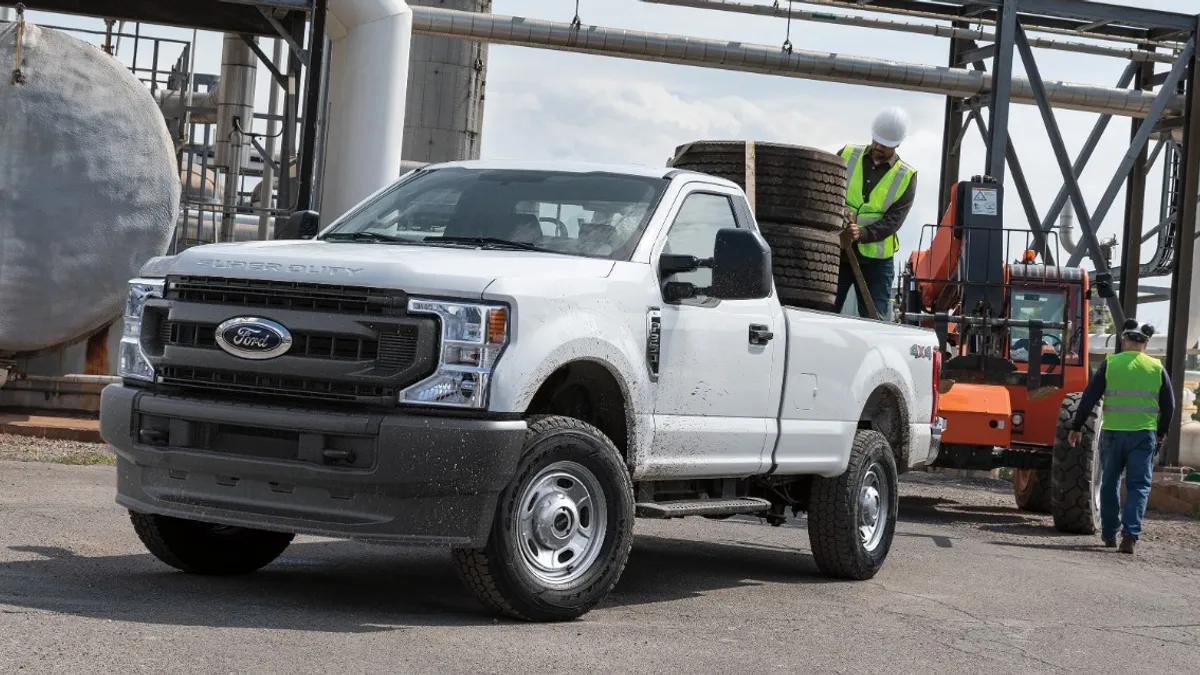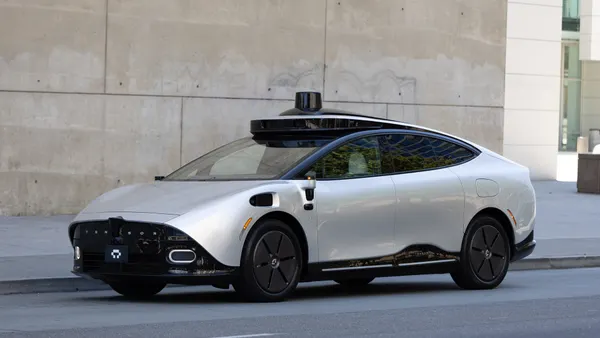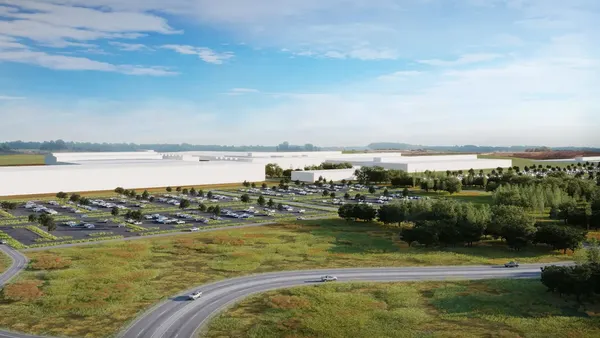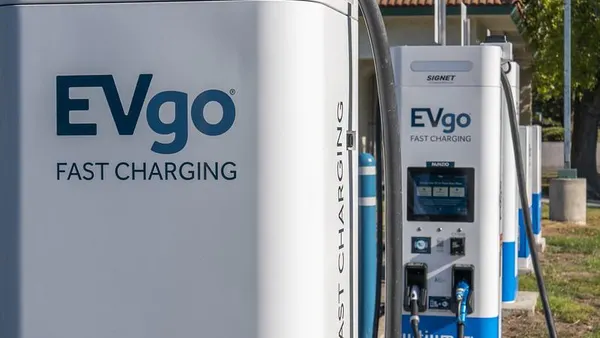Dive Brief:
- Panasonic signed an agreement with Sila Nanotechnologies, a battery materials company, to develop electric vehicle batteries using silicon anodes, the companies said Wednesday.
- Sila will optimize the nano-composite silicon anode material for Panasonic to reduce charging times and increase range.
- The battery materials developer says its nano-composite silicon anode material can help deliver 20% more range than the graphite based anodes used in today’s lithium-ion batteries.
Dive Insight:
Automakers are increasingly turning to new materials and battery designs as they look to increase EV range, lower costs and reduce their dependence on critical minerals and battery materials from China.
Unlike a conventional lithium-ion battery, Sila's nano-composite silicon anode material is composed of silicon-based nanoparticles. These nanoparticles substitute some of the graphite in a battery cell's anode with inexpensive and abundant silicon, allowing for the production of lower cost, energy-dense batteries. According to Argonne National Laboratory, silicon anodes have almost 10 times the theoretical energy capacity of the graphite anode materials used in lithium-ion batteries today.
In addition, Sila's nano-composite silicon anode material can be a drop-in replacement for graphite-based anode material in existing lithium-ion battery production lines, as the silicon anode coatings can be applied to foils using existing lithium-ion battery production processes, Sila says.
This makes it possible for Panasonic to scale the technology using its current battery manufacturing equipment without any significant investments. Sila’s nano-composite silicon anode material also generates 50% to 75% less CO2 per kWh than graphite anode production, according to the company.
“By integrating Sila's groundbreaking battery material with our advanced cell manufacturing capabilities, we believe that we can address the concerns such as range anxiety and charging time and contribute to accelerating the adoption of EVs,” said Shoichiro Watanabe, executive vice president of Panasonic Energy.
Titan Silicon can improve the charging speed of EVs, taking as little as 20 minutes to charge a battery from 10% to 80%, with plans to reduce it further in the future, according to the company.
California-based Sila was founded in 2011. The company’s CEO and co-founder Gene Berdichevsky is a former Tesla employee who served as principal engineer for the lithium-ion battery for the Tesla Roadster, which was the electric automaker’s first vehicle.
In 2019, Mercedes Benz acquired a minority equity stake in Sila as part of its research and development of advanced batteries for its future electric vehicles. The forthcoming Mercedes-Benz EQG G Wagon will be the first EV to use Sila’s nano-composite silicon anode material for its batteries.
Sila was also one of the first companies to receive a portion of the $3.5 billion in funds available as part of the Bipartisan Infrastructure Law intended to boost domestic manufacturing of raw materials for EV batteries for electric vehicles and lessen the reliance on imported graphite, most of which is currently imported from China.
In October 2022, the U.S. Department of Energy awarded Sila a $100 million grant to scale the manufacturing of its silicon anode material. Sila used the funds to finance the build out of its over 600,000-square-foot manufacturing facility in Moses Lake, Washington. The company aims to have 20 GWh of production capacity of battery anode material by 2026, which is enough to power around 200,000 EVs. By 2028, Sila aims for over 150 kWh of manufacturing capacity.
Panasonic, which is also Tesla’s main battery supplier, plans to increase its global production capacity of EV batteries to 200 GWh by fiscal year 2030-2031.



